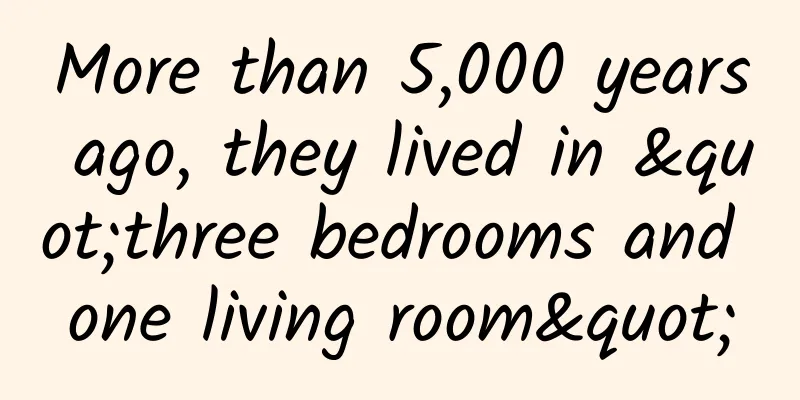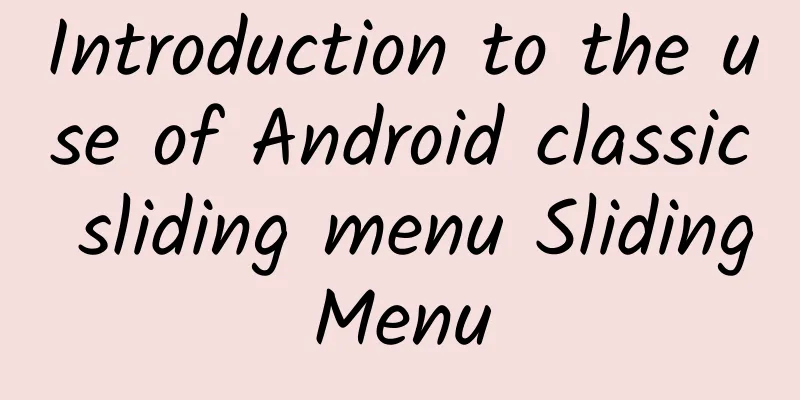What are the operational strategies behind free and paid products?

|
Between 2013 and 2014, when Xiaomi CEO Lei was promoting the "pig on the wind" everywhere and when O2O was booming, the Internet industry launched a big discussion on "Internet thinking". What is Internet thinking? Some say it is about making ultimate products, some say it is about cross-subsidy, some say it is about platform and big data strategies... Everyone seems to have mastered the Internet thinking, and "traditional companies" in all walks of life have suddenly become "Internet companies." Even if it is a listed company, once it has "Internet thinking", for example, by changing the name of its stock, the stock price can rise by several consecutive daily limits. We have said before that the Internet is not a tool for traditional companies to acquire customers, but a completely new way of thinking and a new impact on the past business chain. And in this shock, the most common practice is to use so-called free thinking and cross-subsidy. The general practice of Internet projects is to acquire as many users as possible, let them form loyalty to the product, form usage habits, and then gradually reap the benefits. The most valuable thing about an Internet project is that it has a group of users who are accustomed to using this product. Habit is a very scary thing. For example, if you are used to buying things on JD.com , then you will not remember Suning.com and Amazon most of the time; if you are used to ordering food from Baidu Waimai most of the time, then you will not remember Meituan and Ele.me most of the time. In order to get users to use the product, you have to give them a reason to use it, and this reason is often also shared by your competitors - for example, the restaurants that Baidu Takeout has, Meituan and Ele.me also have. How to convince users to use your product? How to educate users to form habits? Profit is the best means, especially for wealthy teams, who prefer such crude methods to solve the problems of attracting new customers and educating users. Their famous saying is: If money can solve a problem, it is not a problem. For example, they were doing O2O car washing back then. At first, the car wash cost 20 yuan per time, then 10 yuan per time, then it was free, and later on, the car wash was free and gifts were given away. The user was extremely happy and readily registered using his mobile phone number. Of course, users are not stupid. When they find that they can get a bunch of coupons and vouchers by registering new users with their mobile phone numbers, and the only price they pay is all kinds of spam text messages and spam phone calls, they make a decision: buy a new mobile phone number specifically for "taking advantage of Internet projects." More and more projects have found that the quality of users brought by new user acquisition activities is getting lower and lower. What should I do? Smart Internet operators can always find a solution. They found that in order to keep users and make them accustomed to using the product, they had to make them pay a price. Therefore, when JD.com launches "Bai Tiao", it will offer exclusive discounts for Bai Tiao. Bai Tiao is a very powerful layout, which is a personal small consumer loan. Don't be fooled by the fact that a mosquito's legs have little flesh, but there are so many mosquitoes. Another advantage of consumer loans is that the possibility of default is relatively small - no one will damage their credit for a little bit of money. What's more, when the user cannot pay back the loan all at once, he can pay it back in installments, dividing a large sum of money into several small amounts, and charging interest and installment fees at the same time. The psychological process that JD.com users go through when they see the exclusive Bai Tiao discounts while shopping may be like this. He may have money and does not need to use IOU, but if he does not use IOU he will lose the exclusive discount. In order to save money, he might as well use IOU. As long as Bai Tiao is used, JD.com requires users to enter bank card information and ID card information. Users have put in the effort and left their information on JD.com. So next time if he needs to buy a large product and does not have enough money, he will think of using JD Baitiao installment payment. Gradually, users developed the habit of using Bai Tiao. Once, a classmate asked me in a training class that JD Plus membership is a loss-making project, but JD is promoting it aggressively. So he had a feeling: the subsidies for Internet projects should be to use the money of low-quality users (non-Plus members) to subsidize high-quality users, rather than to use the money of high-quality users to subsidize low-quality users. This seems to be different from what is written in the book "Free", which says that companies use the money of high-quality users to subsidize low-quality users. For example, using the money paid by paying users to subsidize free users. The author believes that JD Plus membership is not a cross-subsidy project, but a user habit-forming project. For JD.com, the Plus membership program is not unbearable to lose money in the short term. What is truly unbearable is if high-quality online shopping members are lost to its competitors. The services provided to Plus members, such as 10 times the Jingdou rewards (Jingdou is JD.com's incentive system product, which can be used for discounted shopping) or 60 shipping coupons throughout the year are all binding methods launched for high-quality online shopping members, and the Plus membership price of 149 yuan/year is indeed very cost-effective. Services provided by JD Plus members Products such as Baidu Takeout also have membership services. Baidu Takeout once launched a membership service of 20 yuan/month, in which members can enjoy free delivery. For users who order food frequently, this is very cost-effective, so many users will purchase this membership service. Although Baidu Takeout does not make money from membership services, it binds users. These member users will no longer go to Meituan or Ele.me to order food, which will win the user's usage habits. For an Internet company (or project), even a listed company, the most important indicators are the number of active users and revenue (profit). Therefore, cultivating user habits and keeping users active are core indicators of continuous operations . Letting users take advantage is the biggest bait left for users. Why are some products paid and others free? In my opinion, at least from the perspectives of product, operation and market, there are three different reference answers. First of all, from a product perspective, products that waste time should be free, and products that save time should be charged. This may seem a little strange, but it makes perfect sense. Time-wasting products can make users invest a lot of time and energy, and such products can often become large-scale products. For example, when people go to Sina.com to read the news, it is ultimately a waste of time; when people go to Youku to watch videos, it is also ultimately a waste of time. Because this product can meet the user's need to kill time, and killing time is a rigid need for many people, the stickiness of this product will be very high. Moreover, the average usage time of a single customer is very long - how else can one kill time? It will also become easier to cross-subsidize such products. It’s not excessive at all to insert a 90-second advertisement on Youku! This is a product for killing time. Watching an extra minute and a half of ads is just enough time for users to pour a cup of coffee and find snacks. But cross-subsidy is not possible for time-saving products. Product guru Zhang Xiaolong said: "I hope people will use it and leave." How do you advertise a product that people will use and leave? You have prepared a PPT and are going to play it for everyone at a meeting. If you open the PPT and it starts with a 15-second advertisement, no one will be able to stand it. A large number of tool products fall into the “time saving” category. Just like the Dingdang App of Grassroots Technology, apart from the boss checking their work, no sales staff is willing to spend more time on it, and it is impossible to make it a social product. How can a product be social when the boss is present? So when there is not much competition in this kind of industry, just charge the fees. Don't want to see ads? Want to save time? Just buy a membership! Secondly, from an operational perspective, products with low user costs (cost of acquisition + service) should be free, and products with high user costs should be charged. User costs can be accurately calculated after a certain period of operation. For example, user acquisition cost CAC = (marketing costs + labor costs for attracting new users) / number of new users. For example, an app gained 10,000 registered users through paid downloads from the app store , with an investment of RMB 80,000. Add to that the other costs of 20,000 yuan for the app store operator, and the cost of each CAC can be roughly defined as 10 yuan. Similarly, the user's service cost can also be calculated, including the investment in servers and bandwidth, the cost of service personnel, etc. can also be quickly calculated. The user service cost can be considered as marginal cost tending to zero on the Internet. The reason is that the more users there are, the relative computing resources, that is, the server and bandwidth resources will not increase significantly. But there are exceptions. For example, in a rapidly developing and fiercely competitive market, the cost of service is not just computing resources, but more operating costs necessary to attract users. For example, in the competition between Didi Dache and Kuaidi Dache, the vouchers and discount coupons continuously issued by both companies are typical operating cost subsidies. In this case, when user operating costs increase to the point where cross-subsidies cannot make up for the loss, direct charging becomes inevitable. A friend of mine made a product for pregnancy and baby, mainly providing knowledge services to young mothers. From the perspective of the functions of reading articles and community chatting, it is free because these are functions for killing time; however, this maternity and baby product has a function of online doctor consultation, which is a function for parents to save time and get answers, which is a paid function. From a market perspective, products with a large user base should be free, while products with a small user base should be charged. As the user base grows, there are more ways to segment different users, more people are interested in different things, and more ways to monetize. If your product has the potential to have a large number of users, it makes perfect sense to offer the service for free first. For example, Jinling Technology has set up an elite club for wealthy people, that is, high-income people with assets of more than 100 million yuan. The entry threshold is that members must apply first, and can only enter the forum after approval by the club's decision-making committee. This is typical of niche products - yes, they charge a membership fee, and it's expensive. Whether it is free or paid, remember to make the demands of upstream and downstream companies and users clear. The author of this article @Jin Pu, Zhang Zhongrong is compiled and published by (Qinggua Media). Please indicate the author information and source when reprinting! Product promotion services: APP promotion services, advertising platform, Longyou Games |
<<: The most comprehensive summary of Apple bidding ads ASM terms in history
>>: Shanghai server cabinet rental price
Recommend
Why do people like to eat chocolate?
Mixed Knowledge Specially designed to cure confus...
The sandstorm is coming again! Be especially alert to these major health hazards!
According to the Central Meteorological Observato...
How to develop and build WeChat Mini Programs with zero basic knowledge?
WeChat mini programs are applications that can be...
How to leverage huge amounts of traffic from 0 to 1 quickly?
Qianchuan has integrated various e-commerce adver...
The Good Wife (All 7 Seasons)
The Good Wife is an American legal drama televisio...
Summary of search function design, designers please take a look
In the previous articles, I mentioned that if des...
This is the "super group"! Those young scientists who are "entangled" with quantum
Xinhua News Agency, Hefei, May 3, Title: This is ...
Civic's big brother is out! Dongfeng Honda announces the suspension of sales of the 1.5T version of CR-V
Some people say that some so-called car owner gro...
Johnson & Johnson stops selling baby powder containing talc. How dangerous is talc?
Recently, Johnson & Johnson announced that it...
How to use the Guangzhou maternal and child mini program? How to promote the maternal and child mini program mall?
After the country relaxed the "three-child p...
"Naruto" ends: Is the domestic Naruto industry chain also over?
Have you ever watched "Naruto"? This co...
Why is "封神" not "封仙"? The true origin of the words "封" and "神"
The first film of China's first mythological ...
Drink this cup of coffee! What? How did you fall asleep after drinking it?
"I have to finish my manuscript tonight, let...
Smartphone photography capabilities have advanced by leaps and bounds, but frequent collaborations with camera brands may just be a gimmick
Nowadays, the development direction of high-end s...
Can a shrunk sweater be restored to its original state after washing?
Soft and waxy cashmere sweaters and warm sweaters...









